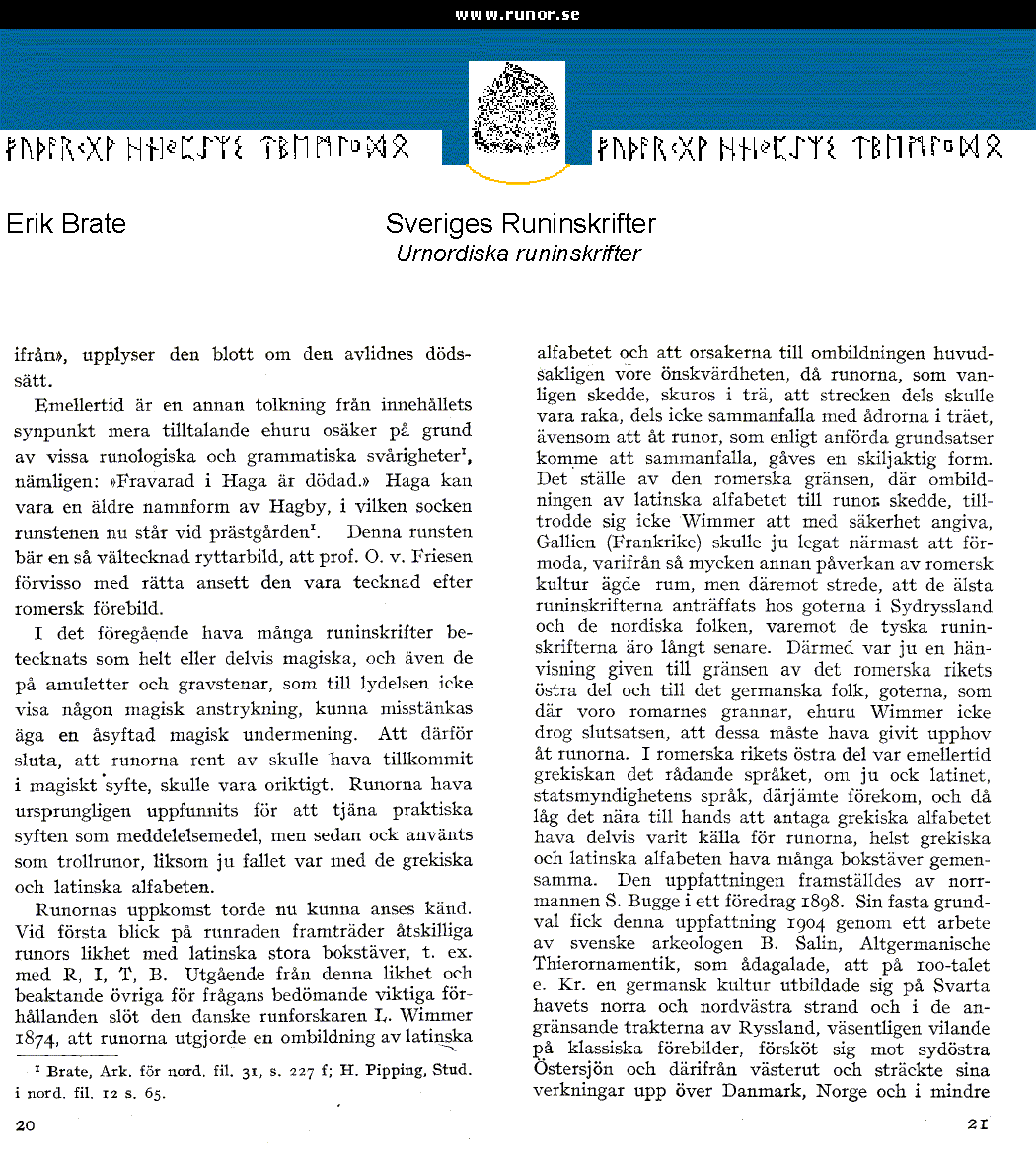
However, another
interpretation is more attractive although uncertain because of certain
runology and grammatical difficulties, (1) namely:
“Fravarad in Haga is declared dead.” Haga can be an older
name off Hagby, in which parish the rune stone now stands nearby the
rectory. This rune stone carries a so well done painting of a rider,
that prof. O. v. Friesen with correct supposing think that the painting
is patterned after the Roman model of painting.
In the previous have
many runic inscriptions been denoted as entire or partially magic, and
also these on amulets and tombstones, but the wording do not directly
show magic connection. And because of that it isn’t correct to say that
the runic inscriptions have a magic aim. The runes have originally been
invented in order to serve practical aims that communication, but later
also used as magic runes, as is the case with the Greek and the Latin
alphabets.
The runes origin is
probably known. At first glance on rune rows it appears that some runes
have similarity with Latin big letters, e. g. with R, I, T, B.
Regard to this the Danish runologist L. Wimmer 1874, estimated that the
runes are a transformation of the Latin alphabet and
(1) Brate, Ark, for nor. fil. 31, s. 227 f;
H. Pipping, Stud in nor. fil.12 s. 65.
the reasons to the
transformation is, that the runes were mainly carved in wood and that
some parts of the letters need to be straight and no parts of the
letters should not overlap the graining in the wood. That place of the
Roman boundary, where the transformation of the Latin alphabet to
runes, took place, is not easy to state, Gallien (France) lay closest,
according to L.Wimmer where from much impact of Roman culture took
place.
But on the other hand the
oldest runic inscriptions has been found with the Gothics in the south
Russia and with the Nordic people. The German runes are later
inscriptions. It’s obvious that its better to refer to the boundary of
the Roman country's eastern part and to the Germanic people, the
Gothic, as where the Romans neighbours. In the Roman country's eastern
part was Greek the prevailing language, if also Latin, the government
authority's languages existed contemporaneously with Greek, one can
assume that the Greek alphabet has partially been a source for
runes.
The Greek and the Latin
alphabets have many letters common. In a presentation in 1898 that view
was stated by the Norwegian S. Bugge. That view was confirmed in 1904
through a work of the Swedish archaeologist B. Salin, “Altgermanische
Thier-ornamentik”, this work indicate that in 2th century AD.
Germanic culture was formed at the Black Sea's northern and north
western beach and in the nearby lands of Russia and it spread to the
south eastern parts of the Baltic Sea region and from there to the west
to Denmark, Norway and to Sweden to a certain degree.